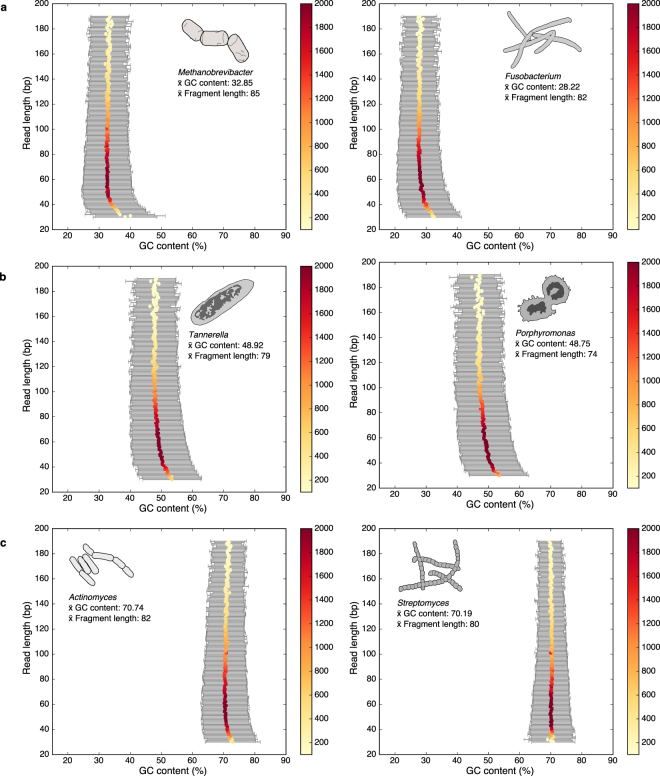Figure 6.
Relationship of GC content to fragment length in five prevalent oral genera and one soil genus (Streptomyces). (a) Two low expected GC content genera, Methanobrevibacter and Fusobacterium binned by read lengths wherein each dot represents the mean GC content for that bin. (b) Two moderate expected GC content general, Tannerella and Porphyromonas binned by read lengths wherein each dot represents the mean GC content for that bin. (c) One high expected GC content oral genus (Actinomyces) and one high expected GC content soil genus (Streptomyces) binned by read lengths wherein each dot represents the mean GC content for that bin. Heat bar indicated the number of reads representing each length bin. In all cases except for Streptomyces only reads from dental calculus samples were included. Reads for Streptomyces were extracted from dentin samples to contrast GC shifts in a potentially modern soil contaminate with typical members of the human oral microbiome. In all cases except for Streptomyces the GC content of shorter reads is skewed higher than the overall mean value. This effect greater in low to moderate expected GC content genera than those with higher GC content (Supplementary Figure S8).

